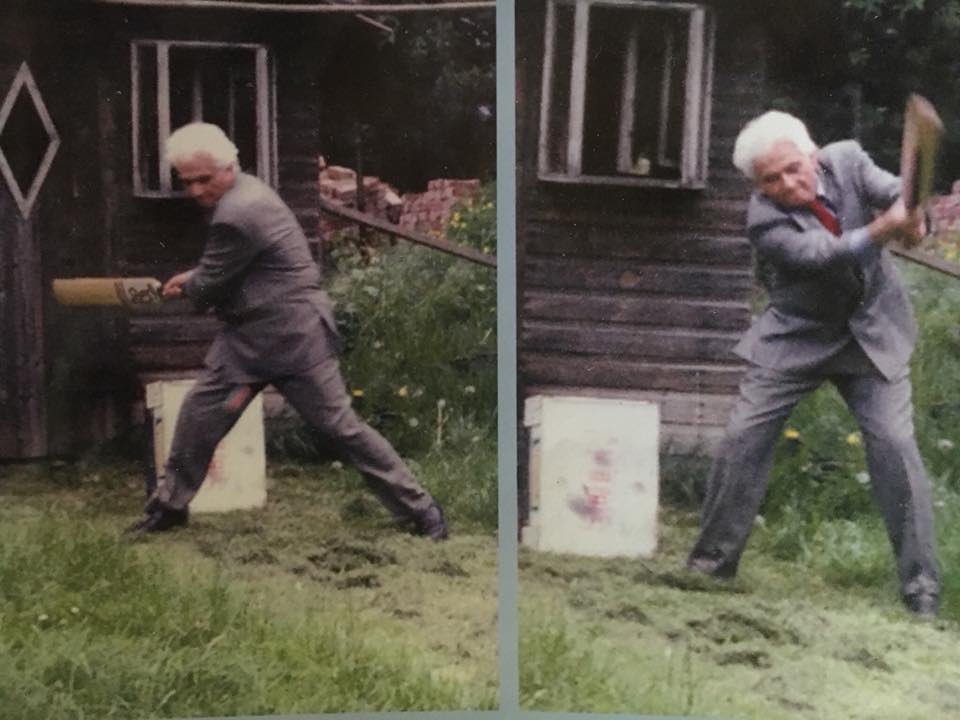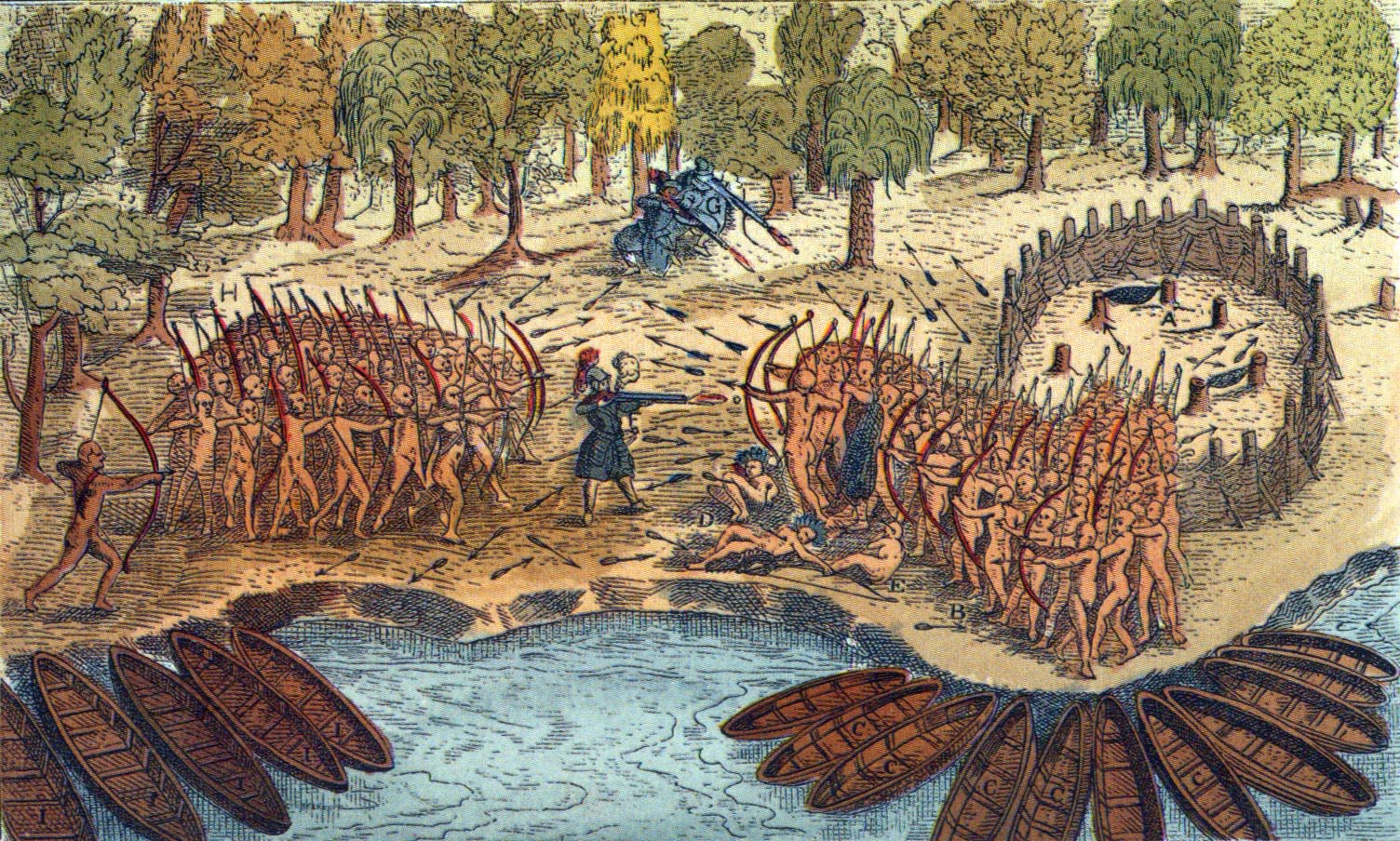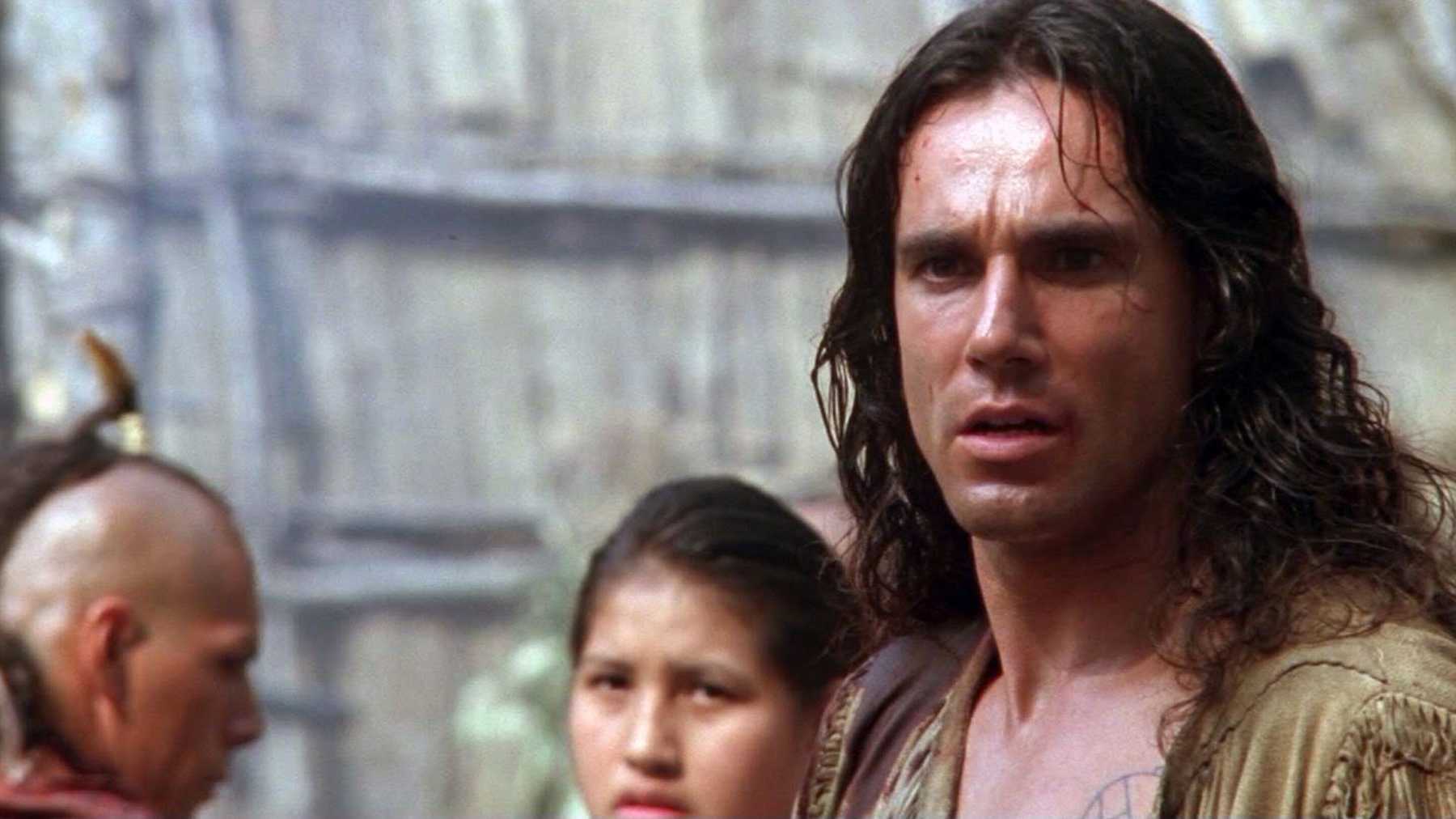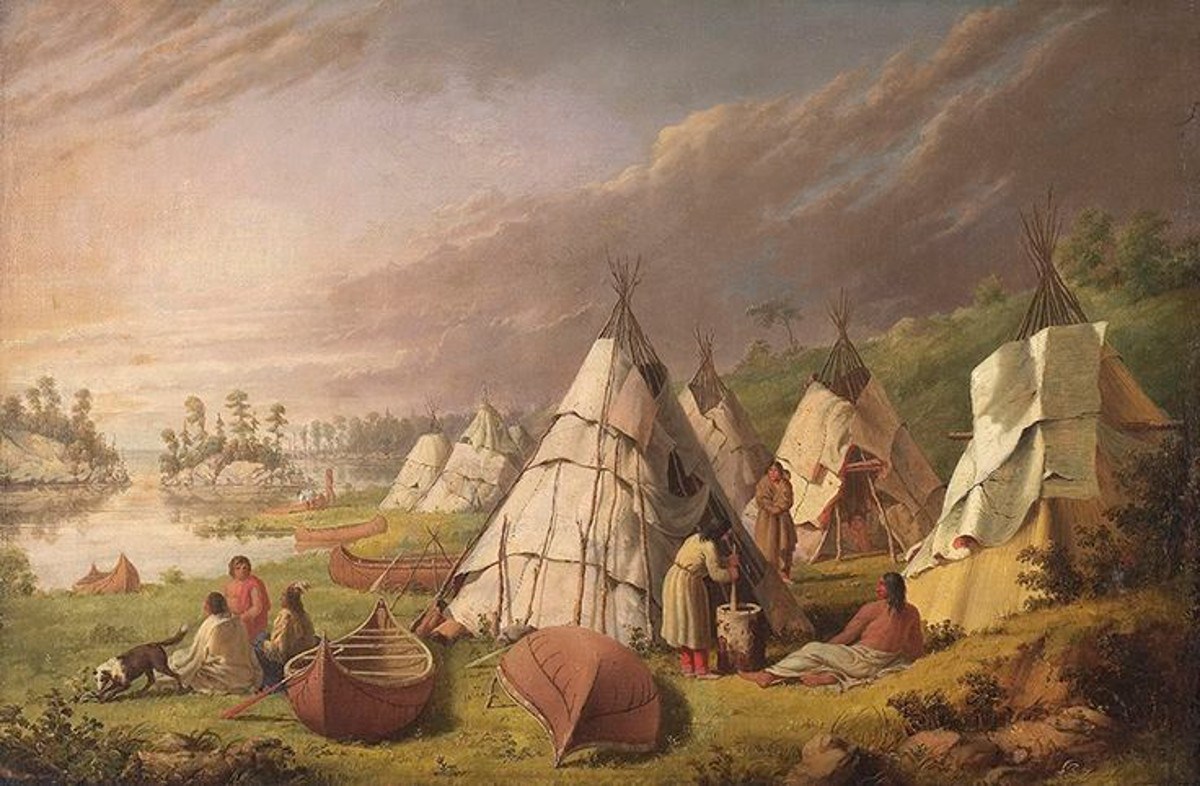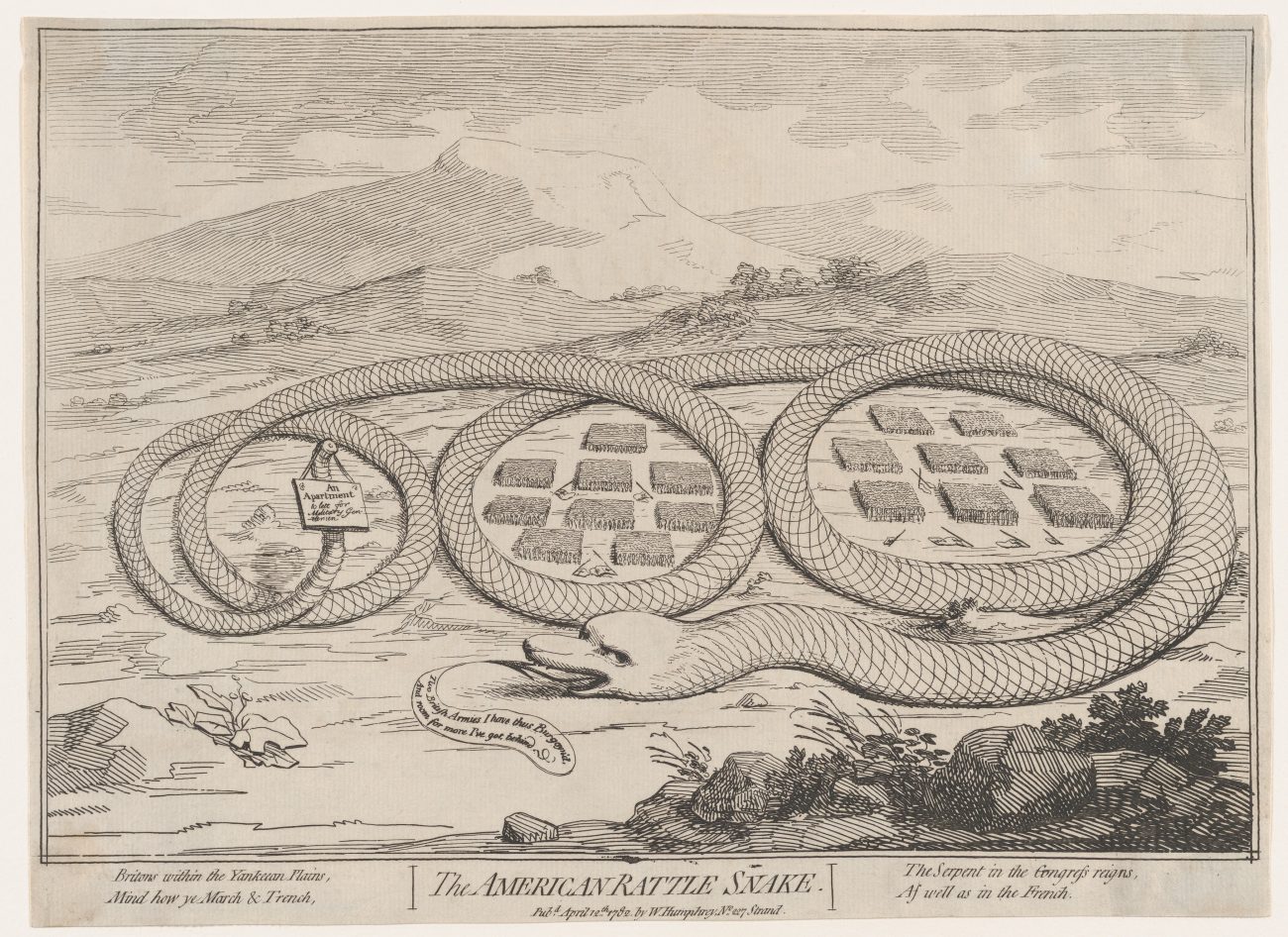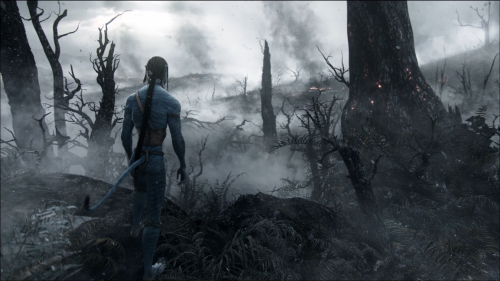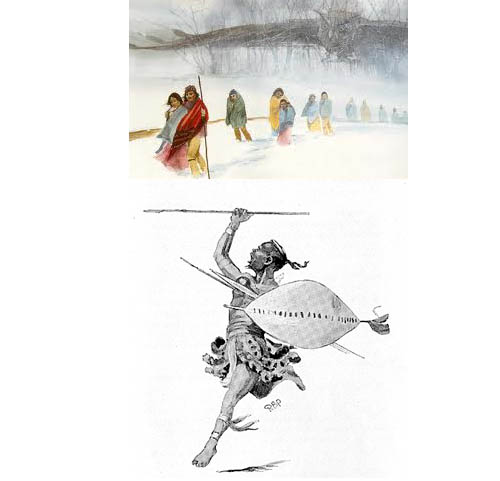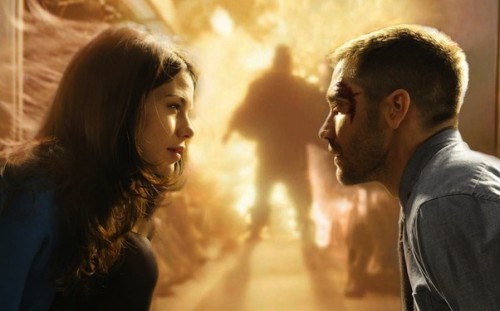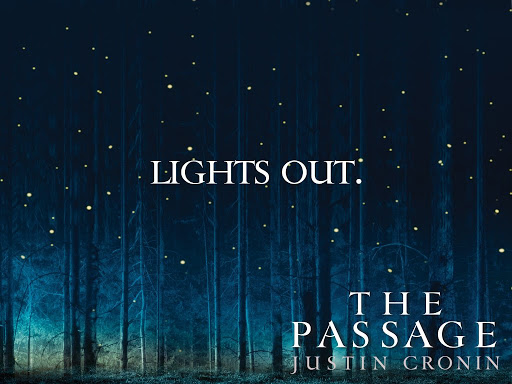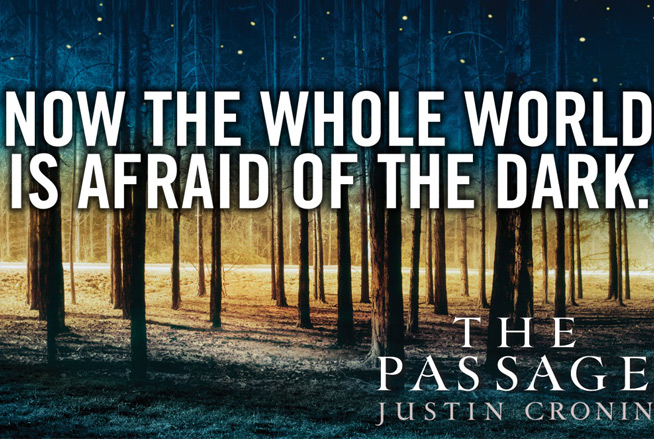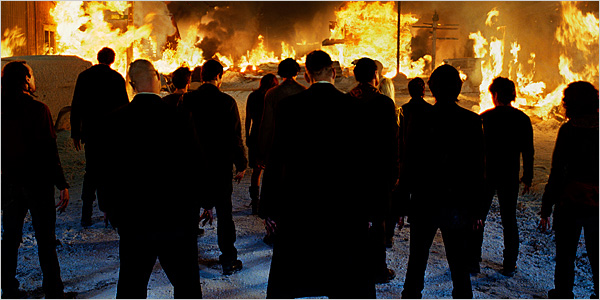–Deconstruction aligns itself with the history of the European empires, with a universal and impossible colonization. That’s a claim likely to be met with more than customary suspicion, so I’d like to present the clearest evidence for this without delay. What I mean to show is that deconstruction is an extrapolation from colonial history. Anyone inclined to doubt this should read out loud the following sentences, all of them from Monolingualism of the Other.
- Most of what we say about “situations of ‘colonial’ alienation or historical servitude … also carries well beyond these determinate conditions.”
- “It would be the exemplarity [of colonialism] … that allows one to read in a more dazzling, intense, or even traumatic manner the truth of a universal necessity.”
- ”I would not like to make too easy use of the world ‘colonialism.’ All culture is originally colonial.”[i]
These three sentences—non-continuous; a motif not an instance—should suffice to establish a first point: Deconstruction would have us believe that colonialism is a ubiquitous and permanent condition or even that we have to face up to an metaphysical colonialism from which no liberation is possible: “the truth of a universal necessity.” Monolingualism was first published in 1996, and goes back to a lecture that Derrida gave in Louisiana in 1992, so it might be tempting to think of this colonial register as a novelty, an unusual feature of his late thinking, maybe even as an anomaly. One is powerfully reminded, however, of an interview that Derrida gave to a feminist interlocutor in 1981. He was arguing, on party-line anti-humanist grounds, that women were wrong to seek liberation and agency, because such pseudo-goods would merely render them metaphysical. Emancipation, that is, would simply ensconce women in the bad illusions of Western personhood, from which they would still have to seek non-identity and alterity. This is the nuance of Derrida’s argument: Liberation may not be possible, but then neither is it desirable.[ii] And so in Monolingualism, Derrida just comes out and says that “emancipation” and national “revolution” are a “trick,” the suggestion being that colonization is, well, whatever isn’t a trick: a candor, an illumination—the ethical condition, in other words, having to speak a language that is not really your own, an alien language, in a manner that renders you open to the other.[iii] It is possible, of course, to say that “liberation is a trick” and mean that the various freedom movements have mostly failed—that many achieved freedoms have been insufficiently liberating, that what passed for independence in Jamaica in 1962 or Zimbabwe in 1980 was not, in fact, the unhobbling that it promised to be. That Derrida is arguing nothing of the sort should be clear if we linger for a bit over the word “alien.” We all live in conditions of “colonial alienation”—that, too, sounds like a complaint, like an outmoded snippet of existentialist melancholy, but only until you recall that “alienation,” in Derrida, is a condition to be embraced (because a name for what binds me to the not-I). Language is colonial because my relation even to my native tongue is “asymmetrical”—that’s Derrida’s word; in language, we are “always for the other, from the other, kept by the other.”[iv] And this position of being kept is, of course, what deconstruction has to offer by way of virtue; it is the stance from which one pursues justice and perhaps already a form of justice itself. Derrida: “I always surrender to language.”[v] People who are actually colonized—let’s call them “colonized in the narrow sense”—are thus closer to a certain wisdom, provided they know how to submit to that status, how not to struggle, how to follow Derrida by surrendering. Derrida is admirably upfront about the point: The “language of the other” will sometimes be “the language of the master or colonist.”[vi] This might be “unsettling,” but deconstruction can’t help with that. Anti-imperialism is immoral to the extent that it invites a subject people to seal themselves off from a disruptive and alien force to which one would more properly submit.[vii]
This is the instant when one is tempted to start blabbing the established facts of Derrida’s personal history: that he was pied noir; that he threw his lot in with the French when Algerian independence came; that he served in the French military, in Algeria, during the Algerian War; that he wrote a nineteen-page letter to Pierre Nora defending the accomplishments of French settler society.[viii] (Derrida was thirty-one when he wrote that letter, in case you’re wondering whether the letter in question counts as juvenilia.) By themselves, though, such biographical data won’t tell us much; it’s not clear what they are supposed to disclose about his published writing. We don’t have to supply Derrida’s missing biography for him, however—we don’t have to excavate the life behind the writing—since there is a lot we can say about how Derrida stages his life in that writing. Deconstruction is at its most revealing when it comes closest to autobiography. Sometimes, not often, the philosopher speaks about his own childhood and in doing so improvises for deconstruction the kind of sociological account that Marxists and others would otherwise feel compelled to cart in from the outside: This is where deconstruction came from; these are the historical and political circumstances that gave rise to my thinking.
In Monolingualism of the Other, Derrida wants to account for himself and his philosophy in openly national-ethnic terms. It might be easiest at this point just to reach for a question: What nationality is Derrida? French, one replies without needing to think about it, having spent many decades now talking about “French philosophers” and “French intellectuals” and “French theory.” But then how would Derrida himself answer that question? That’s harder to answer; not “French,” at any rate, at least not always and not without provisos. In Monolingualism, he assigns himself three different ethnicities, which then get superimposed on one another in complicated ways. This will take some explaining:
First, he calls himself “Franco-Maghrebi.”[ix] This jumps out because it’s a term that usually refers to North Africans living in France and so suggests that Derrida, in an unexpected moment of solidarity with the banlieues, is actively identifying with immigrants and their kin. It’s the sort of formulation that would make a beur of any French-born deconstructionist.[x] As such, it calls to mind those rare passages in the early Derrida where he not only inveighs against “Western metaphysics,” but also points to non-Western alternatives. There is something big right at the beginning of Grammatology that doesn’t usually feature in presentations of Derrida’s core arguments. As of 1968, one of the categories that most interested Derrida—that, indeed, consistently roused his ire—was “phonocentric writing,” writing that wanted to be close to speech, which mostly meant “alphabetic writing” or any script that mimicked phonemes.[xi] This was the particular (and non-Heideggerian) way in which the younger Derrida thought the Greeks had ruined everything: Western writing was infected with self-loathing by its very alphabet. Mere spelling submits writing to the authority of speech. His attention thus turned, though only fitfully, to non-alphabetic writing systems, to the point where he was briefly claiming to prefer Chinese characters or the mixed writing systems of the ancient world.[xii] When Derrida calls himself “Franco-Maghrebi,” then, we have to hear him as fessing up that he is not comfortably or wholly French, nor even comfortably European. Deconstruction maintains a still operative allegiance to something outside the West.
If it is nonetheless unclear whether or not to call this solidarity, then this is because Derrida, in Louisiana in 1992, called himself “the only Franco-Maghrebian here” and, indeed, teasingly pulled rank on the people who otherwise fit that description: North African Arabs with strong ties to France and French culture. To one such person he said: My friend, I am more Franco-Maghrebian than you.[xiii] His meaning becomes clear over the next few pages: Derrida is more Franco-Maghrebian because he is neither one nor the other, because his friend is really Moroccan, whereas he is not really Algerian. At that moment, something unusual about Derrida’s formulation slides into view, which is that he wants the two-term ethnicities that have become common in immigrant societies to be able to indicate neither-nor instead of both-and, which is how they are usually glossed. In fact, he seems determined to reserve the hyphenate construction for the negative case, requiring us silently to revise any number of common usages. To anyone speaking Derridean, “Mexican-American” would henceforth mean “not Mexican, but not American either.” I am Mexican-American … I am an un-Mexican-un-American. The hyphen furnishes not the fullness of a dual identity, of belonging more than one place, but the liberating severity of non-identity, of belonging nowhere, of feeling beholden to no formation.
Not really Algerian…. Second, then, Derrida makes a point of letting his audience know that his family was Jewish. He talks about being stripped of his citizenship during World War II and of being expelled from his French-colonial school as a pre-teen. He even links that near-calamity to his philosophical preoccupation with non-identity.[xiv] This matter is especially complicated, however, since it would have been easy for Derrida at this point to claim a Jewish identity. Plenty of scholars do this on his behalf.[xv] He was neither French nor Algerian because he was Jewish; one writes that sentence and Judaism takes up its accustomed place (or non-place) as the non-national and stateless term, the stranger, the third, the identity-that-is-not-one. It is all the more conspicuous, then, that Derrida refuses to make this claim. Plainly, the term “Franco-Maghrebi” is already in the way, occupying the spots in all the formulations where one might have expected to find the word “Jewish”; it, and not its Abrahamic rival, is doing the work of non-identity. “To be a Franco-Maghrebian, one ‘like myself,’ is not … a surfeit or richness of identities, attributes, or names. In the first place, it would rather betray—a disorder of identity.”[xvi] From this perspective, a man calls himself “Franco-Maghrebi” in order not to call himself “Jewish,” presumably because this latter would too readily be perceived as a preformed category.
Not really Algerian, then, but not really Jewish, either. Third, and in order to explain this last, Derrida offers that it was his absorption into French settler society that kept him from being in any emphatic way Jewish: No-one he knew spoke Hebrew or Ladino; the Algerian Jews trimmed the penises of infant boys, but called this “baptism”; he grew up in “a disintegrated ‘community’ … cut off … from Jewish memory.”[xvii] Derrida way of putting this is to remark that he was socially and culturally a pied noir. This, at least, is an identification he reaches for without fuss: “I have never ceased learning, especially when teaching, to speak softly, a difficult task for a ‘pied noir’….”[xviii] Judaism moves in to block his identification with Algerians, and French settler society moves in to block his identification with Jews, but nothing arises in turn to block that last identification. The role of pied noir is the limbic of non-identity within which the other two are suspended, since it was under the umbrella of French colonial institutions that Algerian Jews and assimilated Arabs and the mutant French all met. The term “Franco-Maghrebi” thus ends up suggesting not North African Arab in France but displaced pied noir: the homeless Acadian or expropriated Rhodesian. A term that you might have thought was functioning like “Haitian-American” or “Asian-American” turns out to sport the old imperial hyphen after all, in the manner of “Anglo-Indian” or “Anglo-Irish,” while the qualities that a radical ethics has sometimes associated with Judaism get assigned to white colonials instead.
What we’ll want to see at this point is that Derrida goes out of his way to narrow the distance between the Algerian Jews and the pied noirs—or, indeed, between the pied noirs and favored Arabs. He refuses, in other words, to distinguish between varied and unequal social positions in colonial Algeria, or is interested in those situations where these really were least distinct. Crucial here is a longish passage where Derrida describes his early education: “For all the pupils of the French school in Algeria, whether they were of Algerian origin, ‘French Nationals,’ ‘French citizens of Algeria,’ or born in that environment of the Jewish people of Algeria who were at once or successively the one and the other… –for all these groups, French was a language supposed to be maternal, but one whose source, norms, rules, and law were situated elsewhere.”[xix] Two points need to be made about this passage:
First, it is Derrida’s habit to fuse the positions of the colonizer and the colonized, and to associate both indifferently with the alterity for which Judaism has long served as shorthand. “For all the pupils … For all these groups…” This bit of improvised sociology is a historically concrete version of that argument he has already made in the abstract, via the philosophy of language: that none of us are the masters of language, not even of our native tongues, that we are all colonized by language. A person reading Monolingualism of the Other for the first time might think that the historical situation of the young Derrida was simply too peculiar to furnish any generalizable insight. Perhaps all Derrida can do, when thinking back to his childhood in the colony, is testify, to draft what at times reads like anti-fascist testimonio. But writing as a philosopher, Derrida says he has no interest in mere witnessing of this kind. Quite the contrary: He wants to consider the ways in which the seemingly anomalous settler-Jew, the not-quite-pied-noir, discloses something “structural, universal, transcendental, or ontological.” Here’s the single most Kantian sentence in the entire oeuvre: “What holds for me, irreplaceably, also applies to all. … Everyone can say the same thing for themselves and of themselves.”[xx] So everyone is a not-quite-pied-noir, and deconstruction asks us now to conclude that no–one is native. No-one is native—you can’t be a good Derridean and flinch from the realization that this line of reasoning simply shuts out indigenous people, by declaring them non-existent. You might, of course, think that Derrida is right about this—that the people who call themselves indigenous are dismally self-deluding—though hopefully you’ll concede even so that this is going to come as news to the Quechua and kanaka maoli. The Algerian Jews, at any rate, “could not properly identify themselves,” but then neither could the French-speaking Arabs or the white-settler kids; they were all equally “deprived of easily accessible models of identification.”[xxi] Non-identity thrives in the colony, which is to that extent to be preferred to non-colonial formations—either to decolonized institutions or to the putatively uncolonized metropolis.
And yet—second point—the metropolis retains its position of priority even here, just when it seems to have been sidelined. The colony, as the scene of generalized liminality, is where deconstruction is best actualized, and yet it can only achieve its truth in relation to Paris. Without colonialism, no liminality; and without the metropolis, no colony. A few sentences bear the claim out. French literature, Derrida says…
…was the only thing … that I enjoyed receiving. The discovery of French literature, the access to this so unique mode of writing that is called ‘French-literature’ was the experience of a world without any tangible continuity with the one in which we lived, with almost nothing in common with our natural or social landscape.[xxii]
We’ll need to pause to absorb the force of these key Derridean claims: The French language was situated elsewhere. French literature had nothing in common with ordinary experience. It’s not hard to see that Derrida has maneuvered the high bourgeois culture of the imperial center into what deconstruction takes to be the redemptive position, the position of Autrui. Racine and Voltaire are this short book’s one specified instance of “language … coming from the other,” language as “the coming of the other.”[xxiii] The idiom of alterity has always been wholly formal anyway and to that extent self-defeating, unable to distinguish among the world’s many different candidates for the title of other, consigning them all in one go to the heap labeled “anything-that-isn’t-me” and thereby abolishing the very distinctions that the concept was commissioned to safeguard. More to the point, the concept of “the other” is reversible; I possess a boundless obligation to the other, but then so does the other, who to that extent ceases to be altogether unlike me. Radical ethics thus establishes the identity of moi and Autrui in the very act of making our dissimilarity morally relevant. As concepts, non-identity and alterity are vacant, incapable of caring about which historical content you summon to fill them out. Politically, otherness becomes a non-starter as soon as you realize that one can easily plug the imperial metropolis into the alterity slot—and not only that one can, but that Derrida does. For our purposes, the important point to carry forward is that when Derrida speaks of language in these (messianic) terms—as “the coming of the other”—he is making a universal point about the colonial status of all language while also talking in historically specified ways about the projection outside of Europe of Parisian French: “an available monolanguage—for example, French.”[xxiv] In deconstruction, the other is a Gaul. “I finally know how not to have to distinguish any longer between promise and terror.” Or almost two decades before that, in Of Grammatology: “What is going to be called enslavement can equally legitimately be called liberation.”[xxv]
[i] Monolingualism, p. 23, p. 26, p. 39.
[ii] See “Choreographies” in Points, pp. 91-2: “To credit [the ordinary left-wing conception] of progress and entrust everything to it would be to surrender to a sinister mystification: everything would collapse, flow, founder in this same homogenized, sterilized river of the history of mankind…. This history carries with it the age-old dream of reappropriation, ‘liberation,’ autonomy, in short the cortège of metaphysics and the techné.”
[iii] The claim is, for Derrida, startlingly direct: The idea of French national culture is “the first trick.” “Liberation, emancipation, and revolution will necessarily be the second trick.” Monolingualism, p. 40.
[iv] Monolingualism, p. 40.
[v] ibid., p. 47.
[vi] Ibid., p. 62.
[vii] See also Monolingualism, p. 40: “we cannot and must no lose sight of this obscure common power, this colonial impulse which will have begun by insinuating itself into … ‘the relationship to the other’ or ‘openness to the other.’”
[viii] For more on that letter, see Edward Baring’s “Liberalism and the Algerian War: The Case of Jacques Derrida,” in Critical Inquiry 36 (Winter 2010), pp. 239-261. As of February 2021, the Wikipedia entry on Derrida states that “[d]uring the Algerian War of Independence of 1954–1962, Derrida asked to teach soldiers’ children in lieu of military service, teaching French and English from 1957 to 1959.” In fact, Derrida was drafted in 1957; underwent military training outside of Algiers; and in addition to teaching schoolchildren, produced translations for the French colonial administration while it conducted war against the Algerians. See Benoit Peeters, Derrida: A Biography, pp. 91-94.
[ix] Monolingualism, p. 12.
[x] “Maghrebi-French” is also common in the English-language scholarship, often as a more formal synonym for beur. For a general discussion, see Paul Silverstein’s Algeria in France: Transpolitics, Race, Nation (Bloomington: University of Indiana Press, 2004).
[xi] In Of Grammatology, Derrida lays into “the phoneticization of writing” as early as p. 4.
[xii] He aligns écriture with China on pp. 25-26 and again on p. 76.
[xiii] “You see, dear Abdelkebir”—the Francophone Moroccan critic and writer Abdelkebir Khatibi, eight years Derrida’s junior—“between the two of us, I consider myself to be the most Franco-Maghrebian, and perhaps even the only Franco-Maghrebian here.” Monolingualism, p. 12.
[xiv] Monolingualism, p. 15-17.
[xv] See especially Sarah Hammerschlag’s Figural Jew: Politics and Identity in Postwar France Thought (Chicago: University of Chicago Press, 2010).
[xvi] ibid., p. 14.
[xvii] ibid., p. 55.
[xviii] ibid., p. 47.
[xix] ibid. p. 41.
[xx] ibid. p. 20.
[xxi] ibid., p. 52.
[xxii] ibid. p. 45.
[xxiii] ibid., p. 68.
[xxiv] ibid., p. 67.
[xxv] Monolingualism, p. 73; Of Grammatology, p. 131.

